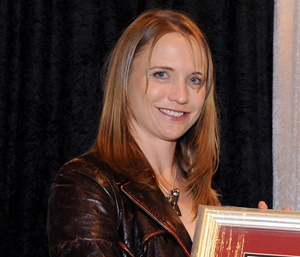Latest News Archive
Please select Category, Year, and then Month to display items
12 January 2024
|
Story Nonsindiswe Qwabe
|
Photo Sonia Small
 Since joining the UFS in 2008, Dr Grey Magaiza has worked extensively on approaches that can foster the socio-economic transformation of societies.
Since joining the UFS in 2008, Dr Grey Magaiza has worked extensively on approaches that can foster the socio-economic transformation of societies.
“The future should be one where communities can decide on their development agenda and futures. That’s the most important for me.” Dr Grey Magaiza, Deputy Director of the Centre for Gender and Africa Studies (CGAS) and Head of the Community Development programme on the Qwaqwa Campus, is passionate about capacitating communities to be agents of change and advancement. His vision for the future emphasises the empowerment of communities to take charge of their development by actively participating in decision making and the implementation of development projects that can improve their lives.
Since joining the UFS in 2008, Dr Magaiza has worked extensively on approaches that can foster the socio-economic transformation of societies. Over the years, he has crafted his research speciality into one that he is most proud of – being an interdisciplinary scientist immersed in the development of communities.
“I’m in a fortunate position of researching what I like. I say ‘fortunate’, because I’ve taken the time to understand what I’m passionate about, which is the overall field of rural livelihoods and livelihood futures – in short, community development. My research starts from an engaged university, understanding the elements that a university must use to enhance transformation and relevance to its immediate community in terms of development.”
One of the ways he has done this is by looking at social entrepreneurship as a development approach for young people in a rural setting. Through workshops with non-profit and civic organisations in Qwaqwa, Dr Magaiza has been helping these organisations to map out their needs and actively meet them through the involvement and support of external role players.
“We understand that communities are part of the national development agenda, but even that national agenda respects community knowledge and intentions and allows communities to shape their identity. A critical enabler of this is community organising. You bring back the capacity in communities to have dialogues on issues affecting them as spaces for engagement, knowledge exchange, and for people to just talk about their way forward.”
By enabling communities to define their development agenda, they can address their specific needs, challenges, and aspirations, he said. “When I look at livelihood futures, it’s quite an exciting aspect of my work – it’s like looking into a fortune tellers’ globe, because you’re not deciding for communities what they should do, but the communities themselves take those decisions.”
UFS prides itself on Pauline Gutter
2014-12-04

Pauline Gutter |
Her work can be described as a visual attack of marks and colour, and the purposeful application of layering and interweaving of layers that gives the identity of continuous flux and ideological migration. Her work highlights the ‘removal’ of the farming community from their land. A review of a recent exhibition described her themes as: “A struggle for survival prevails in the dangerous world that is projected to us in the paintings …”
Gutter is not just a top professional artist, but also a well-known brand. True to her roots, her work often mirrors a passion for the farming community. In 2013, she won the ABSA L’Atelier prize of R125 000, as well as a half year’s stay in the Cité Internationale des Arts in Paris, France.
This art competition is South Africa’s most prestigious art competition and is held annually for artists between ages 21 and 35. This award not only ensures South Africa’s emerging artists of recognition, but also affords them the opportunity to develop their talents abroad.
The UFS is very proud of breeding this class of artist. According to Gutter, her lecturers allowed them space to work on their own identities. Her work has now moved far from simply being portraits and sculptures, it also makes an impact on those who see it.
As a student, Gutter was involved in many community projects at her residence. In 2003 she was one of the two managers of the Dithwele waste sculpture park competition, an initiative of SAB. She is a diverse artist who has worked on KYKNET productions as co-worker and assistant. Gutter also does freelance camera work.
Furthermore, Gutter was on the Mail & Guardian’s list of top 200 young South Africans, an annual list that has become the premier collection of the leaders of tomorrow – and in many cases, today. She also received the Helgaard Steyn prize and was a finalist in the Sasol New Signatures Art Competition.